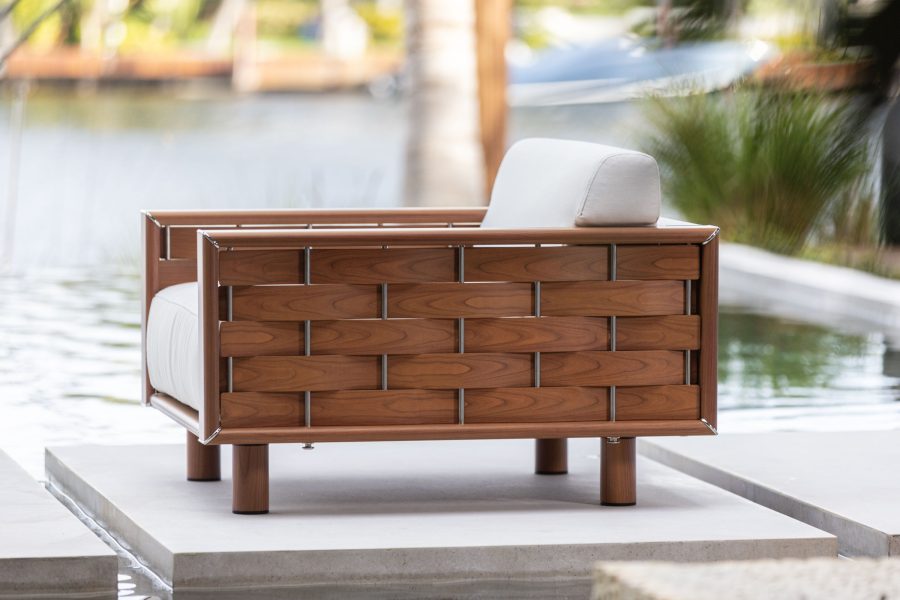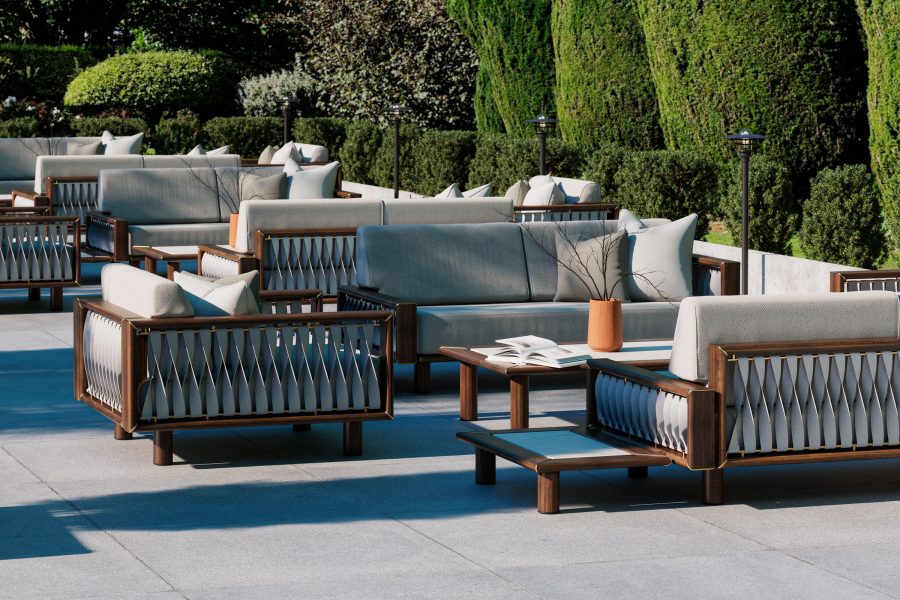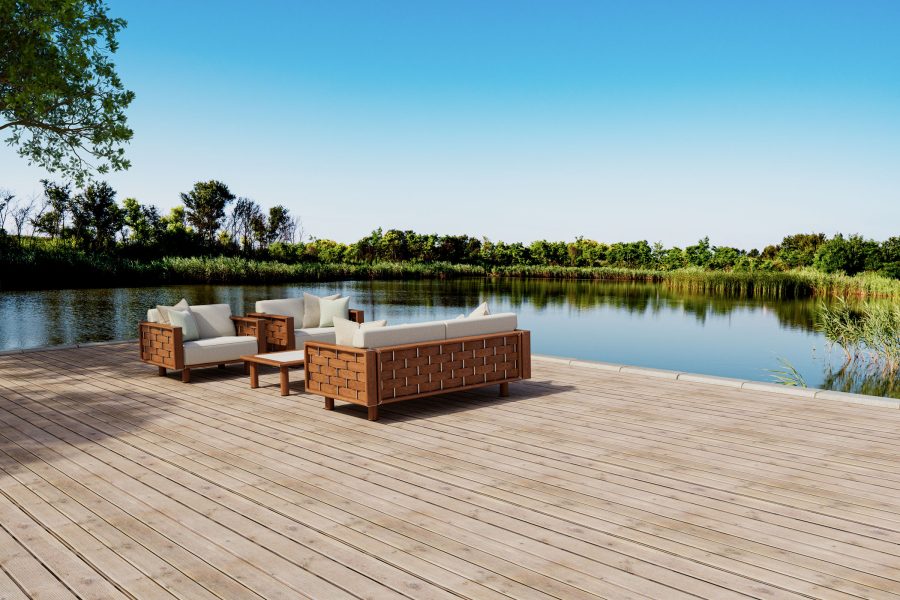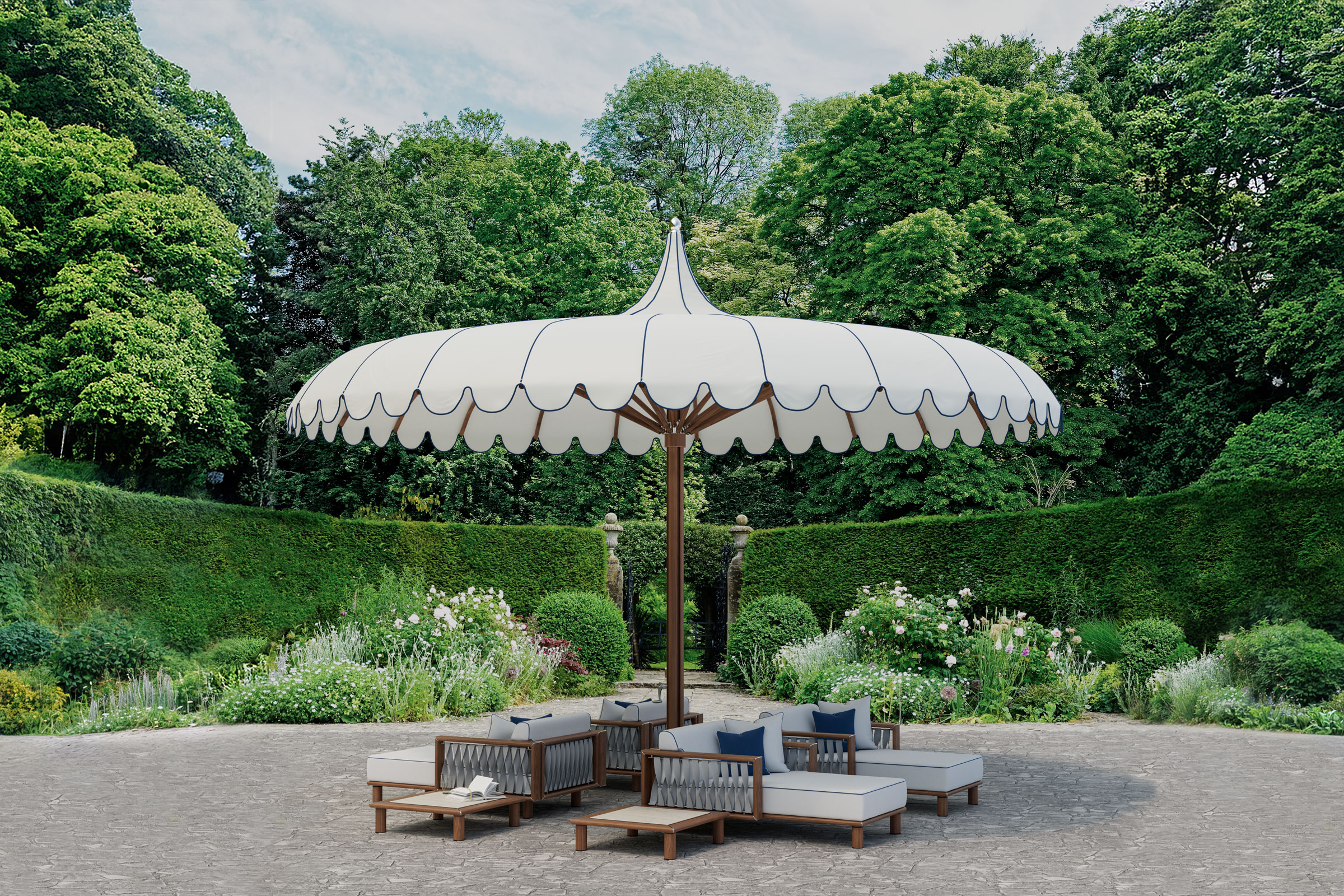Story at a glance:
- Shade solutions are a critical part of outdoor spaces as more and more people look to work, study, or simply be outside.
- Tuuci furniture leverages more than 25 years of leadership in the outdoor world to create a versatile, nautically engineered set of collections that enhance indoor and outdoor living.
Now more than ever people want to live, work, play, and socialize outdoors. We’re drawn to more natural surroundings,” says David Schutte, president at Tuuci, a global leader in sustainable, luxury outdoor shade solutions.
Schutte says it’s an energizing time in outdoor design, as more and more people continue to rethink what it means to embrace the outdoors. “Exterior design is no longer an afterthought. It’s an integral part of the planning process.”
Architects are seeing this demand for outdoor spaces from the beginning of project conversations, too. Brian Vitale, co-managing director of Gensler Chicago, has worked with Gensler for 18 years and says choices like the right shade, lighting, heating, and even plant life are crucial to ensuring outdoor spaces are used and loved.
People design all these outdoor spaces, and if you don’t focus on people’s comfort, they’re not going to get used.
“Shading is so critical. People design all these outdoor spaces, and if you don’t focus on people’s comfort, they’re not going to get used,” Vitale says.
Where some outdoor designs used to simply include trees and little more, he now sees more landscape furniture, beautiful canopies, and clever, inviting solutions that make people want to stay and hang out.
“People are much more in tune to the sustainable aspects of this,” he says. “Native plantings that are not just formal and beautiful, but thinking about how does this work with our climate? People pay much more attention to that.” It makes places much more welcoming, too, he says.
An Oceanfront Origin

Photo courtesy of Tuuci
More than 25 years ago Tuuci was born out of a need for something great. That was when now-CEO, founder, and chief product designer Dougan Clarke was casually selling outdoor commercial furniture—including umbrellas he considered subpar. Clarke was born and raised in South Florida; he loved to tinker almost as much as he loved the water. He was working in the back of a friend’s boatyard when he started experimenting with his own product and formed what would ultimately become Tuuci—or The Ultimate Umbrella Company Incorporated. “His idea was to create umbrellas that last—that didn’t just become garbage,” Schutte says.
Now, instead of throwing a parasol away after one bad rainstorm, people can choose Tuuci solutions; they last so long people are ordering to replace damaged parts many years later and keep them even longer. “The best sustainability is always in the products that endure, that don’t have to get recycled, and don’t go into a dumpster,” Schutte says. “This is not fast furnishings.”
More than You Can Imagine

In the Sola Collection pieces are designed for ultimate modularity, as each piece may be used individually or combined to form various sectional configurations. Photo courtesy of Tuuci
Schutte says Clarke created a company culture based on curiosity, creativity, and exploration, his eyes always on the future. “He created products no one even knew they needed; that’s the brilliance of a creative thinker.”
Today Tuuci works with clients to create bespoke projects, too, including customizing for projects to feel like a series of rooms outdoors. Designing and defining an outdoor room can be challenging, as there is a lack of natural definition provided by walls and ceilings. Tuuci has products to help create outdoor destinations and define spaces, whether designers choose a couple of soft-sided cabanas, a louvered, marine-grade aluminum cabana complete with power outlets, or a mix of solutions.
Design teams are looking for flexibility, Schutte says, whether it’s a corporate environment, higher ed space, or hospitality. “We’re thinking about utilization rates of the spaces you’re creating, and if you’re in hospitality, how are you monetizing that space?” he says. “The goal for many people, and it’s clear in the lessons we’ve learned over the decades, is creating magnet spaces for groups that attract and welcome users. How do you create spaces that people want to be in?”
Today there is a growing push for a seamless transition from indoor to outdoor, from the look and feel of wood to connecting to nature at every turn. It’s creating spaces that are thought of holistically. “Tuuci’s mission is to help people live their best lives outdoors. It’s simple, but it’s hugely profound,” Schutte says.
Having spent a lot of his own career in office meeting rooms, Schutte can testify to the desire to get outside. “Nobody wants to be in a conference room,” he says. “Good planning creates compelling spaces that are also highly functional and highly utilized.”
New Shade Solutions
As more people work, meet, study, or simply relax outside, Schutte says the standard shade umbrella of old won’t do. “You can’t all be huddled where half the people are under an umbrella and half are baking in the Scottsdale sun.” Tuuci’s cantilevered umbrellas omit the center post, allowing for more flexibility and more coverage, for example. “People are looking for larger, more agile spaces,” he says.
Tuuci’s MEGA MAX parasols span up to 24-by-24 feet. “That’s the size of a studio apartment. It’s almost 600 square feet,” Schutte says.
In November Tuuci introduced its Ocean Master Max Solanox cabanas, which can be used to design a lounge space, dining room, or any number of configurations of spaces. “That’s going to provide up to 14-square-foot spaces uninterrupted by columns. That’s a pretty big room,” Schutte says. It’s also engineered to withstand high sustained winds of up to 45 miles per hour and gusts up to 75 miles per hour.
Big Design, All the Details

The Luma Collection by Tuuci is deep-seating furniture that features the innovative Aluma-Weave technique. Photo courtesy of Tuuci
This “little architecture” supports the larger architecture of space when done correctly, Schutte says. “If you think about hierarchy of space and sight lines and creating topography outside, particularly when people are planning rooftop or other areas that are just inherently flat, how do you create a natural topography? Cabanas provide different sight lines.”
Gensler is always thinking about sight lines and how to draw people in, including with their Wichita State University Barton School of Business project. “How do you design these experiences so they’re comfortable and inviting?” Vitale says.
Gensler designs outside to create vistas with a purpose. “This is taking you directly to the business school,” he says, pointing to a popular pedestrian bridge and seating area outside the business school. “We can control what you see. We don’t want people to think about that, but they’re experiencing it. They get these beautiful views, and there’s some of that outdoor furniture. It’s architecture itself, but it doesn’t have doors and windows.”
From palm trees to cabanas to umbrellas and chaises, outdoor spaces can be designed to hold visual interest with different dimensions. With Tuuci designers can choose various iterations of open or closed roofs or walls with louvers, various trellises or curtains, and mix hard and soft elements and more for flexibility in enclosure and opacity. Add to that elements like sustainable lighting, ceiling fans, and TVs, and many people won’t want to leave.
Weatherproofing Outdoor Spaces
Weatherproofing begins with shade, as that’s one quick way to reduce how hot a person feels, says Schutte, pointing to a recent article published in The Atlantic called “Shade Will Make or Break American Cities.” “Blocking the sun can lower how hot a person feels by 36 to 72 degrees,” he says, referring to the article. “Shade is significant in terms of how to keep a space as relevant at 3 in the afternoon as it is at 7 at night.”
Outdoor structures with roofs can make a space viable for longer, both with protection from sun as well as rain or other elements. Add lighting and study sessions and hangouts can last well after dark, too. He says heaters help a lot, too, in cooler months. “How do we help architects create spaces that can be optimized over the greatest period of time?”
The ROI of Outdoor Spaces

The Sail Collection. Photo courtesy of Tuuci
There’s a reason many hotels, resorts, and restaurants are seeking luxury shade solutions with all of these benefits, Schutte says, and that’s because the stakes are high.
“If their outdoor space is not functional and it doesn’t work for their clientele, it literally doesn’t work. It renders spaces unable to properly be used,” he says. “It goes back to how to maximize the utilization rate of spaces you’re creating. If there’s not proper shade or protection, if you suddenly don’t have shade for 30 people at the pool or a restaurant that doesn’t have shade for protection, all of a sudden that outdoor space doesn’t work and they can’t monetize it.”
Anyone living in Chicago or Seattle knows, for example, when it’s a nice day, people want to dine outside. “People go where there is outside seating,” Schutte says.
While some people may consider Tuuci expensive, Schutte says it’s an investment that’s going to have a long life. “These are investment pieces that stand the test of time; they are not disposable. If something breaks we can replace that particular part. It’s something you want to use well beyond one season.”
Inspired by Nature

Photo courtesy of Tuuci
Marine-grade engineering and construction is evident across Tuuci’s offerings, from Aluma-TEAK—a high-performing replication of wood finishes—to the high-performing MEGA MAX that stands up to tough storms.
Schutte points to Aluma-TEAK as yet another example of indoors moving outdoors, too. “It has that compelling visual and sets a more residential tone people like in commercial environments,” he says. While it looks like wood, this finish is maintenance-free and available in six weather-resistant wood looks—Java, Natural, Driftwood, Weathered, Cypress, and Aspen White.
Schutte says materials and finishes like these are designed to withstand the harshest conditions while meeting a range of aesthetic needs. “People like the look and the warmth of wood, but they don’t like the care, particularly in commercial environments, because there’s no one to care for it. Aluma-TEAK provides the look of wood without the hassle, and it does not fade or scratch over time.”
Tuuci also launched an extensive furniture range in October 2024, including four deep seating collections: Luma, Sail, Horizon, and Sola, supported by multiple sun lounges, tables, and benches. Each collection is designed with flexibility and customization in mind. Sola comes in one-foot increments so designers can attach as many or as few units as they want to form a sectional or have standalone pieces. “That can be reconfigured on the fly,” Schutte says. “Everything we do is thinking about flexibility and how it’s really going to be used.”
The Luma, Sail, and Horizon Collections, Marquesa Sun Lounges, and Meritage Tables offer the ability to combine the rich textures of Aluma-TEAK, the sleek tones of premium powder coat finishes, and the refined accent of various Meritage Bezel jewelry-like finishes to create furniture for any vision. Design teams can go subtle or bold to create combinations that feel truly personal.
The meticulous marine engineering Clarke founded the company with continues, as Tuuci uses the materials seen in boating—like aluminum fasteners that hold up under the harshest marine conditions day after day—and incorporates them across collections. “In the form following function of marine design, everything on a boat is there for a purpose—no more, no less than is necessary. It’s taut, thoughtful design, and that is the guiding principle for everything we do at Tuuci,” Schutte says.

